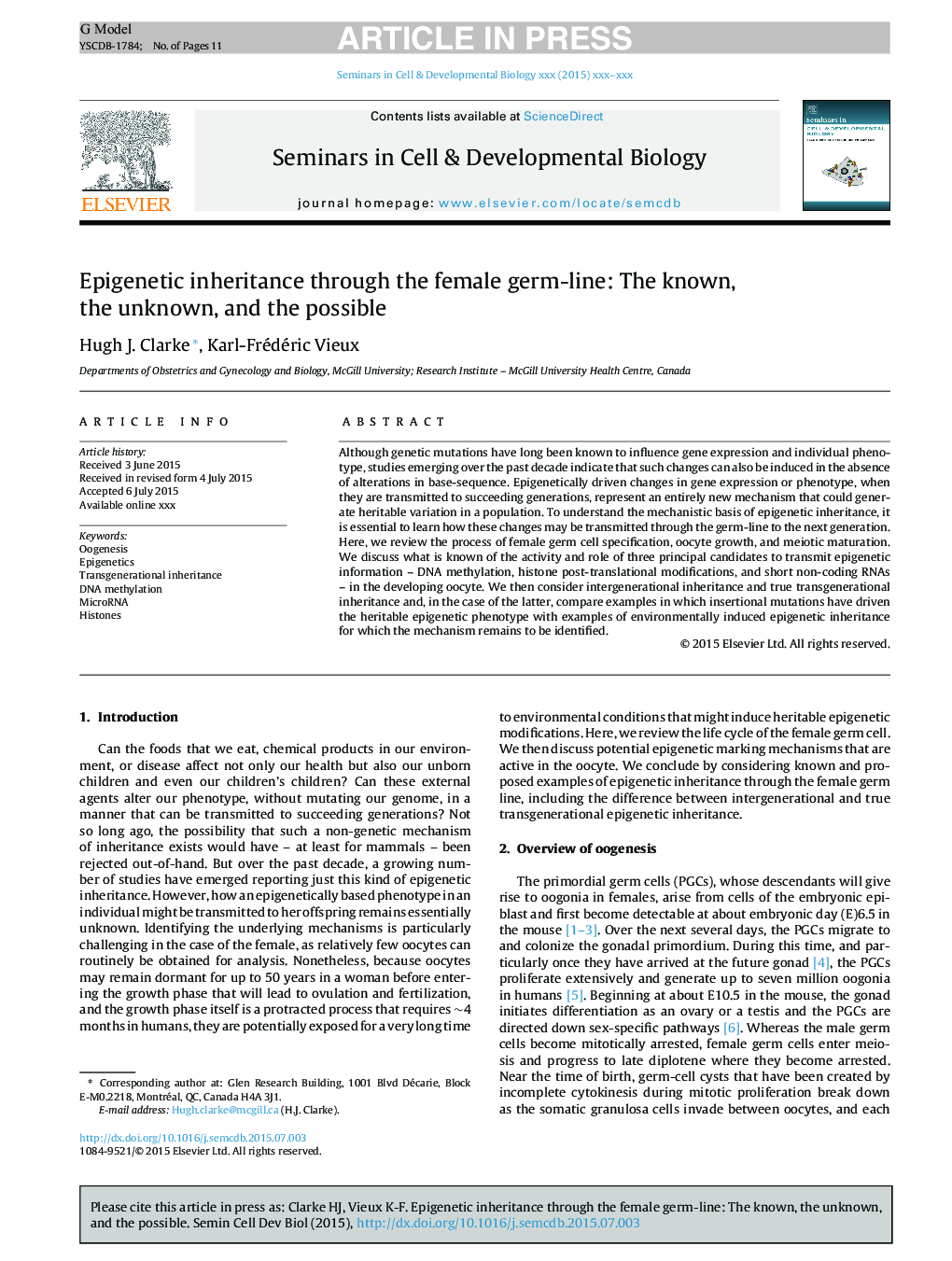| Article ID | Journal | Published Year | Pages | File Type |
|---|---|---|---|---|
| 8480370 | Seminars in Cell & Developmental Biology | 2015 | 11 Pages |
Abstract
Although genetic mutations have long been known to influence gene expression and individual phenotype, studies emerging over the past decade indicate that such changes can also be induced in the absence of alterations in base-sequence. Epigenetically driven changes in gene expression or phenotype, when they are transmitted to succeeding generations, represent an entirely new mechanism that could generate heritable variation in a population. To understand the mechanistic basis of epigenetic inheritance, it is essential to learn how these changes may be transmitted through the germ-line to the next generation. Here, we review the process of female germ cell specification, oocyte growth, and meiotic maturation. We discuss what is known of the activity and role of three principal candidates to transmit epigenetic information - DNA methylation, histone post-translational modifications, and short non-coding RNAs - in the developing oocyte. We then consider intergenerational inheritance and true transgenerational inheritance and, in the case of the latter, compare examples in which insertional mutations have driven the heritable epigenetic phenotype with examples of environmentally induced epigenetic inheritance for which the mechanism remains to be identified.
Related Topics
Life Sciences
Biochemistry, Genetics and Molecular Biology
Cell Biology
Authors
Hugh J. Clarke, Karl-Frédéric Vieux,
